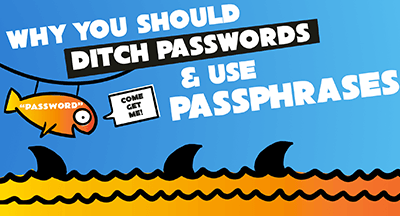
Few organizations have the fundraising game down as well as the Girl Scouts and their legendary cookie sales.

Schools may try to replicate the Girl Scouts’ success with similar sweet sales programs, but what if you could skip the sales and go directly to donations for classroom supplies, edtech, or other initiatives?
Crowdfunding helps schools solicit donations from a wide market without becoming temporary product distributors. At face value, the system seems pretty good: Families and friends donate funds to enrich students’ experiences. It’s trendy and easy. Still, there are plenty of details beneath the surface for district leaders to consider.
The benefits of crowdfunding
Number one for busy school leaders: No more shuffling paper forms or coordinating deliveries of goods. Students can still be motivated by prizes for different donation tiers without knocking on doors or sending catalogs to work with parents.Crowdfunding platforms take on the responsibility for more challenging aspects of gathering payments, such as processing and security. There’s no cash to count or checks to bounce. It’s fast, and there may be fewer organizational hurdles to contend with when it’s time for reimbursement. Best of all, there are no more regional travel limits—if Aunt Marge from way up north wants to donate, all she has to do is click a link.
So what’s leading districts like Dayton Public Schools to place limits on crowdfunding?
Risks of K12 crowdfunding
Individual teachers crowdfunding for their own classrooms may create a headache at the school or district level for a handful of reasons.First, as with any method of gathering and sharing data, privacy is a chief concern. When creating a crowdfunding campaign, sharing images or details about students must be carefully managed, if allowed at all. Crowdfunding platforms often work with third parties, so double-check the details in their Terms and Conditions or Privacy Policies to determine how information may be shared beyond the initial partnership of teacher and platform.
Next, it’s important to understand how crowdfunding can include fraud risks. Some platforms simply pay out directly to the organizer’s account. Others offer a prepaid debit card. If imagining these scenarios is ringing alarm bells, that’s good. While most crowdfunding is done in good faith, there are always those who will make unscrupulous use of tools.
Some platforms, including the popular K12 funding platform DonorsChoose, have specific policies for how donations are handled if a teacher leaves the original classroom they crowdfunded for. Although materials are meant to stay at the original school, with principal approval teachers are able to take materials with them to a new school.
Another concern administrators may address is duplication of efforts. Well-meaning teachers may launch a crowdfunding campaign for items they didn’t realize already appeared in the budget (or were already purchased and stored away).
In the same vein, crowdfunding for technology presents its own considerations. Campaigns must be carefully planned before donations pour in. If a technology department is not equipped to set up and maintain the crowdfunded items, expensive tech may go unused.
Make crowdfunding work
Luckily, most of these risks don’t have to be deal-breakers.The most effective strategy to ward off crowdfunding disasters is simply to talk about the phenomenon, how it relates to your team, and your policies or preferences for crowdfunding in your district. Discuss early and often—is crowdfunding okay? If so, what are the guidelines?
How can everyone work together to keep student data safe? For starters, agree to keep student images, stories, and identifying details private—never use them to fuel clicks on a crowdfunding site.
The school business office should also be consulted with regard to how funds will be delivered to the district. Nix any donations mixing with personal funds. Instead, make sure any donations are sent straight to the district. This is also a good time to discuss a preferred crowdfunding platform. Not all are created equal: Each has a different method of collecting processing and service fees, which means some may be a better fit than others depending on the size and scope of a specific campaign.
If individual teachers are able to keep items donated, how will the district ensure an equitable experience between classrooms? This may not seem like a big deal for small supply campaigns, but if a teacher successfully campaigns for expensive technology (think a 3D printer or a classroom set of tablets), the path forward might be murkier. Some districts are addressing this by having leaders approve wish lists for crowdfunding. Discussion may also eliminate duplicate campaign efforts. DonorsChoose lets districts preemptively list their technology wishes to cut down on wasteful campaigns.
Finally, if crowdfunding gets the green light in your district, try giving pointers on how to make campaigns worthwhile. Some considerations include setting thoughtful goals, marketing basics, messaging, and how to manage incentives for students.
When it comes to crowdfunding, some initial planning can cut the risk and increase the possibility of a rewarding experience for teachers, students, and administrators. How could crowdfunding help your district achieve its goals for enriching students’ experiences?
Follow-up resource: Spot fraud fast
Do you know where to be extra vigilant? Learn where to look in The 6-Step Fraud Test.WHAT'S NEXT FOR YOUR EDTECH? The right combo of tools & support retains staff and serves students better. We'd love to help. Visit skyward.com/get-started to learn more.

|
Erin Werra Blogger, Researcher, and Edvocate |
Erin Werra is a content writer and strategist at Skyward’s Advancing K12 blog. Her writing about K12 edtech, data, security, social-emotional learning, and leadership has appeared in THE Journal, District Administration, eSchool News, and more. She enjoys puzzling over details to make K12 edtech info accessible for all. Outside of edtech, she’s waxing poetic about motherhood, personality traits, and self-growth.




